- Learning time
- 10 minutes
- First play time
- 60 minutes
BEEZ
Designed by: Dan Halstad
Beez is a game of collecting pollen from various flowers, and turning it into honey (points) – the player with the most honey wins. However, most honey not simply a matter of having the most pollen. Instead Beez asks you to collect it according to your own specific criteria.
The shared board is made up of several tiles (divided into hexes) joined together showing various coloured flowers and a couple of leaves. Before play begins, the flowers are populated by pollen. Each player has their own board – a hive – where they’ll store their pollen, and a bee you move to collect it. The game itself is a fairly simple deal of moving your bee and grabbing the pollen.
But their are three shared objective cards that reward all players for filling certain spots on their hive, or collecting a certain coloured pollen, or collecting a diversity of pollen, and so on – and you also begin with two personal objective cards as well, that are kept secret.
On your turn you move your bee. But how your bee moves is critical to the game – as no bee will ever fly the way it faces. Instead, before moving your bee you must rotate it – one side of a hex to move 1 or 5 spaces, two sides to move 2 or 4 spaces, or three sides to then move 3 spaces. If it sounds bonkers, it kind of is – but your bee has these numbers written on the base so they’re both easy to reference, and after a few turns, easy to remember.
Having rotated your bee, you then move it the 1/5 or 2/4 or 3 spaces across the small hexes that make up the board. If you stop next to a small pollen, you take it for yourself. If you stop on the centre of a flower you take the large pollen and one of the smaller ones. In either case you add the pollen to your hive in the appropriate row – your hive board tells you where to place the pollen depending on how far you moved to collect it. (These spaces are finite by the way – if you’ve already filled up the row that houses the 1 movement pollen, for instance, then you can’t add any more to your hive)
As soon as a player collects their twelfth pollen, the current round is played out so everyone has the same number of turns, and then scores are tallied according to the public and private objectives.
The guru's verdict
-
Take That!
Take That!
Although most of Beez is the gentle humming of collection from a shared space, there is the by-product of someone getting the pollen you wanted just before you got there yourself.
-
Fidget Factor!
Fidget Factor!
Moderate. The rules of Beez are simple, but each turn offers several options for your bee - so playing with shrewd drones who like to plan a turn or three ahead will slow the game down.
-
Brain Burn!
Brain Burn!
See above - all you're doing is collecting pollen, but three of your five incentivised objectives are shared with the other players. It might be worth sacrificing a point off your own score to prevent another bee getting a big points haul themselves.
-
Again Again!
Again Again!
Set-up contains random elements and the objectives change from game to game. But the challenge of a Beez game is more how the tactical decisions of you and your opponents impact on each other.

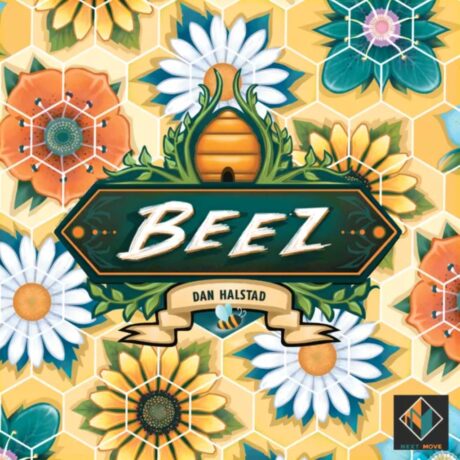
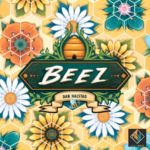
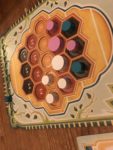

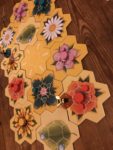
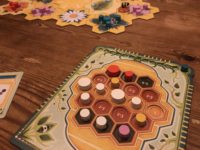


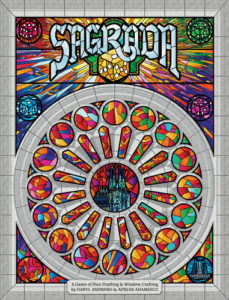
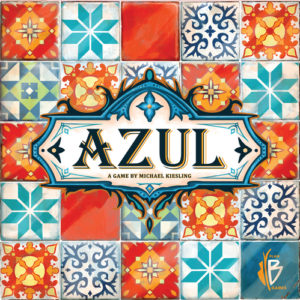

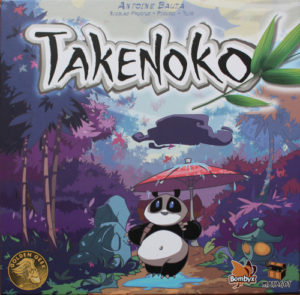
Sam says
What Beez has going for it - although it might not seem so from the confection of numbers described here - is it's extremely easy to learn and play. Like Sagrada, the accessibility comes across as a strength and the fact it all looks rather beautiful on the table doesn't hurt either. For a family who want to pull out a game once in a while that doesn't entail a difficult learning curve and plays quickly (on the whole) this ticks a bunch of boxes. I'm slightly less convinced by Beez as a game to be played over and over, because interaction between the players is so minimal (aside from nabbing the pollen someone else wanted) and the fun challenge of the first few plays - for us - faded slightly. But even then Beez was still fun - a clever design, well-presented, and hitting the marks it set out for.